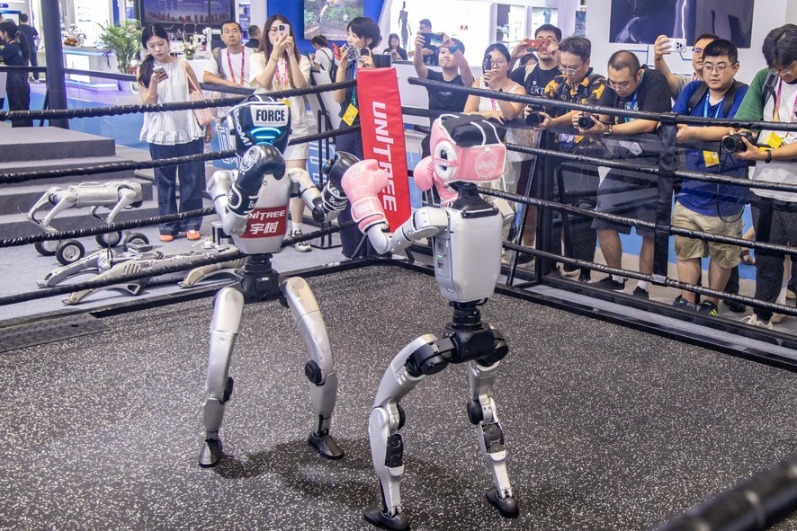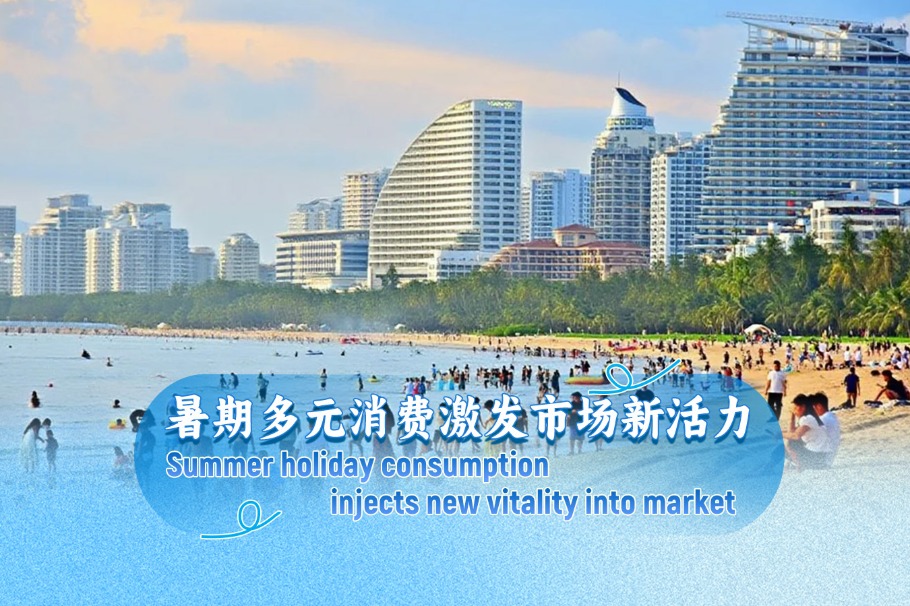Panasonic set to cash in on China's dual carbon goals with hydrogen fuel cells


Japanese electronics manufacturer Panasonic Corp will accelerate its steps to promote the development of hydrogen-powered fuel cells in China and contribute to the nation's carbon peak and neutrality goals to reduce carbon emissions as well as help utilize clean and renewable energy worldwide.
Zhao Bingdi, president of Panasonic China, said the company plans to build its first hydrogen-powered fuel cells and comprehensive energy utilization project at its plant in Wuxi, Jiangsu province, which is scheduled to be put into operation in June. When completed, the hydrogen-powered fuel cell system will provide electricity and heat for the Wuxi factory.
Panasonic has always paid attention to producing energy-saving products and utilizing renewable energy, and its two factories in Wuxi and Beijing have achieved net-zero emissions, Zhao said.
China has pledged to have carbon dioxide emissions peak by 2030 and to achieve carbon neutrality by 2060, making the world's biggest cuts in carbon emission intensity in the shortest time frame in history.
"The dual-carbon goals are a long-term and arduous task, and both an opportunity and challenge for foreign-funded enterprises," Zhao said, adding that they will actively push forward the low-carbon and green manufacturing in the world's second-largest economy and make contributions to the construction of the hydrogen industrial chain.
"Panasonic has more than 20 years of experience in hydrogen energy… We hope to bring this technology to China and we strive to use hydrogen energy in Chinese factories in 2022," said Tetsuro Homma, executive vice-president of Panasonic, in an earlier interview.
The Japan-based multinational is making efforts to provide hydrogen energy batteries, build environmentally friendly stores and achieve energy-saving and carbon emissions reduction through the use of heat pumps and compressors, Homma said.
The National Development and Reform Commission and the National Energy Administration have jointly released the country's first medium to long-term (2021-35) plan to promote high-quality development of the hydrogen industry.
By 2025, China aims to produce 100,000 metric tons to 200,000 tons of hydrogen generated from renewable energy sources a year, reducing carbon dioxide emissions by 1 million tons to 2 million tons a year, according to the plan.
Lin Boqiang, head of the China Institute for Studies in Energy Policy at Xiamen University, said the green hydrogen, which is generated from wind power and photovoltaic power, will greatly reduce carbon emissions and could be widely used in a wide range of sectors, such as transportation, industry and construction.
Reports from the China Hydrogen Alliance predict that by 2025, the value of China's hydrogen energy industry will reach 1 trillion yuan ($152.5 billion). By 2050, hydrogen energy will account for more than 10 percent of China's overall energy system.
Zhao remains upbeat about the prospects of the Chinese market, saying the company has built eight new factories in Zhuhai, Shunde, Guangzhou and Jiangmen in Guangdong province, Jiaxing and Hangzhou in Zhejiang province, and Chongqing, since the COVID-19 outbreak.
"There are enormous investment opportunities in China and we attach great importance to the Chinese market," Zhao said, adding Panasonic mainly focuses on the health, eldercare and fresh food supply chains in China and is actively developing products to cater to the demands of young consumers.
Zhao underscored that China is one of the most important overseas markets in Panasonic's global layout, and the company has stepped up its localization efforts.
It will pay more attention to the research and development of its products, with nearly 9,000 R&D employees in China, and will rely on the Chinese team to develop and produce new products customized for the local market, he added.
The implementation of a new round of opening-up measures, such as the Foreign Investment Law, shortened negative list for market entry and pilot free trade zones, have created favorable conditions for foreign businesses to invest in China, said Zhang Jianping, director-general of the Beijing-based China Center for Regional Economic Cooperation.




































